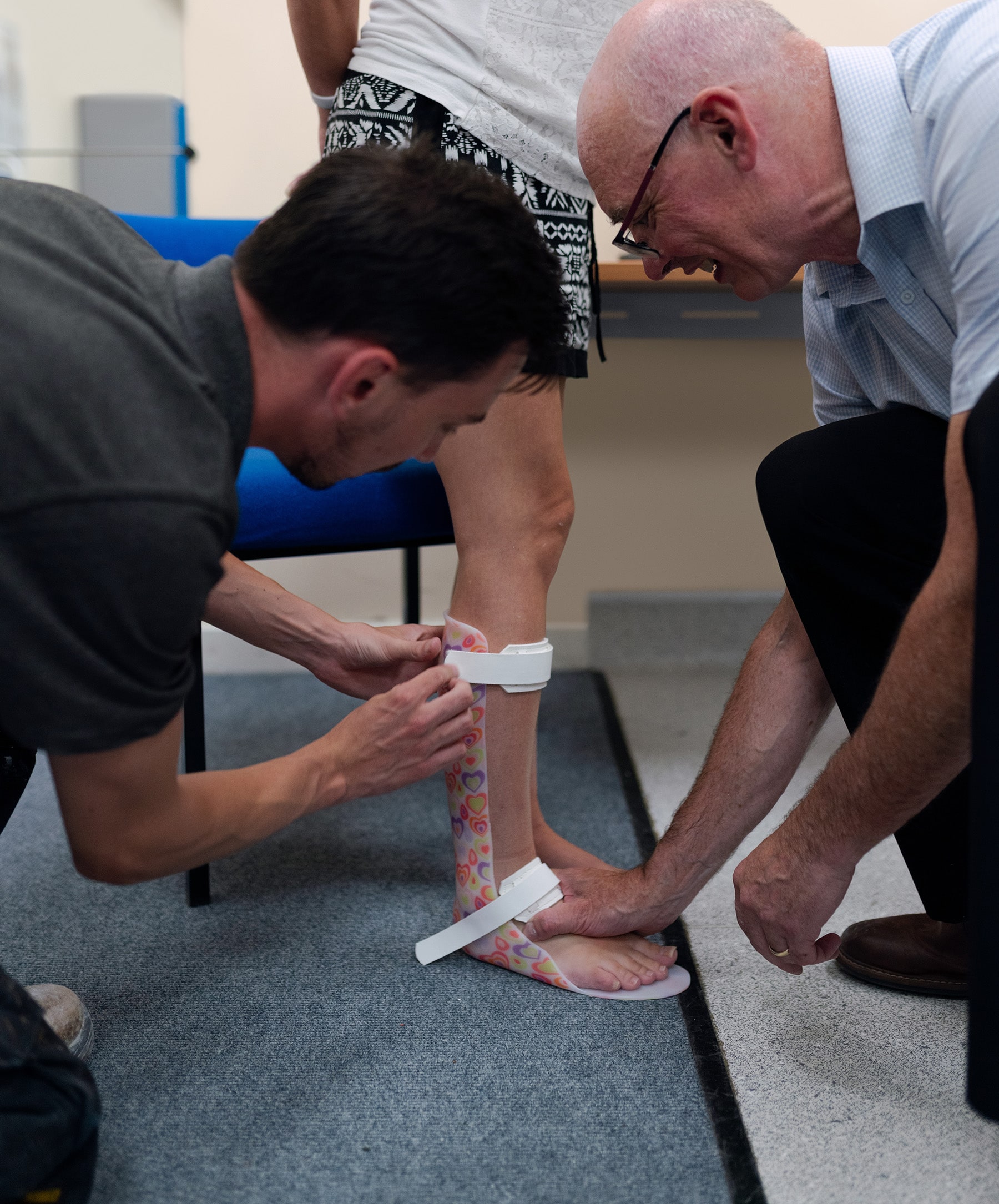Montalto Physical Therapy opened in August of 2007. As a private practice, Montalto Physical Therapy greatly appreciates the relationship it has with the members of the local community. It is this very relationship that has helped us consistently grow over the years.
We all spend a considerable amount of time on our feet and ankles throughout the coarse of our week, and when we experience pain in and of these areas, it can and most times will limit our daily lives. Fortunately, our Long Island area physical therapy practice can help you get relief for any acute or chronic pains you may be experiencing in your feet or ankles. Contact Montalto Physical Therapy today at 516-624-6739 to schedule your consultation and find out how our services can help you kick your foot and ankle pains for good!


Your feet and ankles are both very complex joints and require special care. According to the Arthritis Foundation, the ankle joint consists of three bones that all must interact with one another correctly, as well as various connective tissues that hold the assembly of the joint together. In order for your feet and ankles to function properly, everything must work together in harmony. The tricky part is that the source of foot and ankle pain often develops from weakness up in the chain, especially core and hips.
The foot is very intricate and more complex than the ankle. The foot is comprised of approximately 24 bones, 30 joints, and over 100 muscles, tendons, and ligaments. Because the feet and ankles are so complex, it is common for people to sustain injuries in those areas, which can lead to physical limitations. If your foot or ankle pain is limiting your life, contact Montalto Physical Therapy today!
Foot and ankle pain can occur suddenly due to an acute injury, or it can develop over time. According to the Mayo Clinic, there are several common causes of foot pain and ankle pain, including
Plantar fasciitis
Plantar fasciitis occurs when the connective tissue at the bottom of the foot becomes inflamed. It is most commonly caused by aggravated overuse, such as improper posture, constant standing, or footwear that lacks proper arch support.
Arthritis of The Foot
Arthritis is common and causes painful inflammation in the joints. Osteoarthritis and rheumatoid arthritis are the two most common types of arthritis, and both can greatly impact the foot and ankle joints, resulting in pain and decreased function.
Bursitis
Tendonitis
Tendonitis occurs when the tendons are excessively overused, causing them to become inflamed for prolonged periods of time. This is the most common cause of foot and ankle pain in athletes.
Traumatic injury is another cause of bursitis. The inflammation irritates because the bursa no longer fits in the original small area between the bone and the functionary muscle or tendon. When the bone increases pressure upon the bursa, bursitis results. Sometimes the cause is unknown. It can also be associated with various other chronic systemic diseases.
Sprains and strains
A strain can occur as a result of improper body mechanics with any activity (e.g., contact sports, lifting heavy objects) that can induce mechanical trauma or injury. Generally, the muscle or tendon overstretches and is placed under more physical stress than it can withstand. Strains commonly result in a partial or complete tear of a tendon or muscle, or they can be severe in the form of a complete tendon rupture. Strains most commonly occur in the foot, leg, or back. Acute strains are more closely associated with recent mechanical trauma or injury. Chronic strains typically result from repetitive movement of the muscles and tendons over a long period of time.
Fracture
An ankle fracture is a break of one or more of the bones that make up the ankle joint. A fracture to the foot or ankle could result in weeks of downtime to ensure proper healing. Symptoms may include pain, swelling, bruising, and an inability to walk on the injured leg. Complications may include an associated high ankle sprain, compartment syndrome, stiffness, malunion, and post-traumatic arthritis.
Ankle fractures may result from excessive stress on the joint such as from rolling an ankle or from blunt trauma. Types of ankle fractures include lateral malleolus, medial malleolus, posterior malleolus, bimalleolar, and trimalleolar fractures. The Ottawa ankle rule can help determine the need for X-rays. Special X-ray views called stress views help determine whether an ankle fracture is unstable.
Treatment depends on the fracture type. Ankle stability largely dictates non-operative vs. operative treatment. Non-operative treatment includes splinting or casting while operative treatment includes fixing the fracture with metal implants through an open reduction internal fixation (ORIF). Significant recovery generally occurs within four months while complete recovery usually takes up to one year.
Fallen Arches
Your arches are comprised of several tendons. When the tendons pull together properly, your foot will form a proper arch. However, sometimes the tendons do not pull together properly, resulting in a very small arch, or no arch at all. This is referred to as “fallen arches” or “flat feet,” which can cause pain or discomfort over time.
Tarsal Tunnel Syndrome
The tarsal tunnel contains a nerve that runs from the ankle to the foot. When it becomes pinched or inflamed, tarsal tunnel syndrome occurs.
Anything that creates pressure in the Tarsal Tunnel can cause TTS. This would include benign tumors or cysts, bone spurs, inflammation of the tendon sheath, nerve ganglions, or swelling from a broken or sprained ankle. Varicose veins (that may or may not be visible) can also cause compression of the nerve.
Flat feet may cause an increase in pressure in the tunnel region and this can cause nerve compression. Those with lower back problems may have symptoms.
Rheumatoid Arthritis has also been associated with TTS. Neurofibromatosis can also cause TTS.
In contrast to carpal tunnel syndrome due to one tunnel at the wrist for the median nerve, there are four tunnels in the medial ankle for tarsal tunnels syndrome. If there is a positive Tinel sign when you tap over the inside of the ankle, such that tingling is felt into the foot, then there is an 80% chance that decompressing the tarsal tunnel will relieve the symptoms of pain and numbness in a diabetic with tarsal tunnel syndrome



Our Oyster Bay and Long Island area physical therapists are equipped to treat any foot or ankle condition you may be experiencing, whether it be acute or chronic. We will conduct a comprehensive evaluation to figure out where your pain is originating, and then we will design an individualized treatment plan based on your needs. With an acute injury, it is likely that you will be prescribed a period of active rest, strengthening relevant areas above and below, and manual therapy to dial the pain and swelling down. Then more specialized treatments will begin.
If you have chronic pain, your treatment plan will start with specialized and targeted techniques, as the pain has become progressive. These techniques will include targeted exercises in order to strengthen the foot and ankle muscles, improve balance, and restore joint mobility. Manual therapy strategies will be used as necessary.
At Montalto Physical Therapy, our goal is to create a strong and stable environment so you can get back to living your life and return to sport without limitations.